Kia ora and welcome to another weekly roundup of stories that caught our eye about cities and how they work. Feel free to share any links we might have missed, in the comments below.
As always, this post is compiled by our largely volunteer team, and your support makes it possible – so a huge Friday thank you to all our supporters, old and new. (If you’d like to join them, we’d love that! Here’s how.)
The Week on Greater Auckland
- On Monday, Matt dug into fresh Census 2023 data on how we travel to work and school
- On Tuesday, we shared Talk Welly’s “farewell for now”
- On Wednesday, Matt looked at how to get Auckland’s rail network up to speed
- And Thursday’s post by John took a look at Census data on the growth of our cities.
Sign the petition for rail-enabled ferries
Save Our Trains/ The Future is Rail is leading a petition in support of rail-enabled ferries:
The ageing Interislander ferries must be replaced. We believe it’s crucial that new ferries are rail-enabled and publicly owned, letting rail freight and equipment move easily between the North and South Islands.
Without rail-enabled ferries, the two islands’ rail networks will be disconnected, restricting the movement of goods and putting the South Island’s whole rail network at risk. Current and future passenger rail services also rely on a viable national rail network.
The government said in its transport policy statement that it would prioritise making the best use of existing transport infrastructure. The only decision consistent with this policy is to ensure future ferries are rail-enabled and remain in public ownership.
You can also gather signatures the old-fashioned way: Rail Ferry Petition hard copy ( note that hard copy petitions need to be returned by mail by 21st October).
The curb-cut effect
A nice visual explainer by Sketchplanations of how “when we design to benefit disadvantaged or vulnerable groups we end up helping society as a whole.” Because it’s not just people in wheelchairs or using mobility devices who benefit:
Curb cuts also made life easier for people pushing children in strollers, people using trolleys for deliveries, people pulling a suitcase, those wheeling bikes or on skateboards, and it also helps save lives by guiding people to cross at safe locations.
If you like this, you’ll also like this recent guest post by Vivian Naylor about how raised crossings level the playing field for people with disabilities, children, parents, and all sorts of movements around our city.

The tide is high – but when, and where?
With summer just around the corner, and swimmable cities on our mind, it’s always good to know where the tides are. A note in the inbox this week reminded us of a local connection for Tideschart.com, which is the world’s most popular marine forecasting website, visited over 50 million times annually.
Turns out the founder, Ryan Blundell, grew up in Hobsonville Air Force housing (now Hobsonville Point) where, as a child, he often relied on checking the tides to go swimming or fishing near the Sunderland Hangar. This experience influenced the creation of Tideschart.com, which now provides tide information not only for New Zealand, but also for some of the most remote locations around the world that are often overlooked.
(Ryan also confirms that searches for Florida have been absolutely going off in the last 24 hours!)
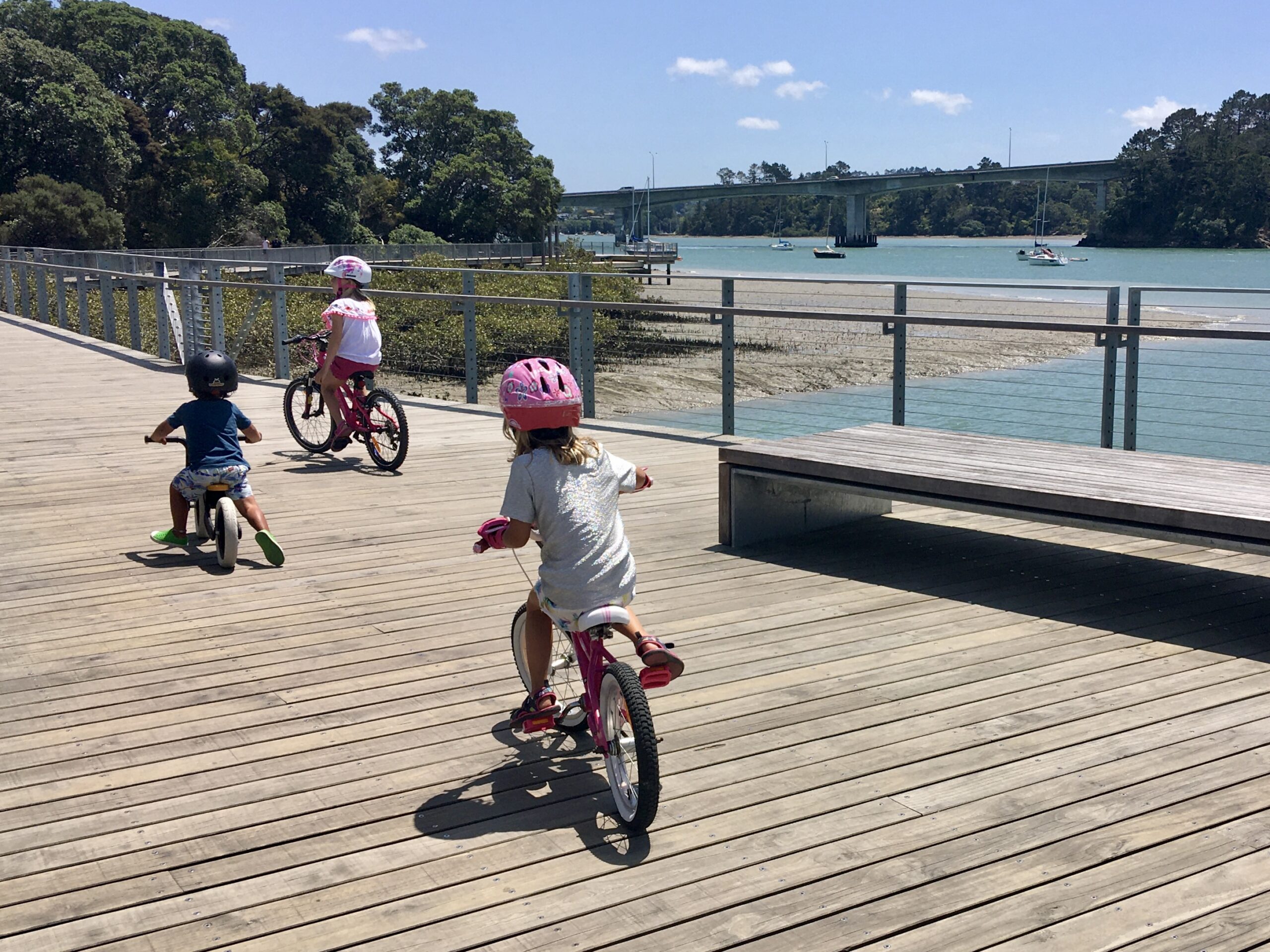
Streets for People (and Horses) on Waiheke
The Waiheke Local Board has asked Auckland Transport to close a section of The Esplanade pathway on Waiheke Island to traffic, by installing permanent swing gates. This is to make the narrow, bendy and unpaved road safer for people walking, cyling and riding horses. Feedback is open until 31 October.
The Esplanade, between Blackpool Beach and Surfdale Beach, was closed off as part of a trial between 2010 and 2021. Due to slips and repairs, the closure was extended until 2023.
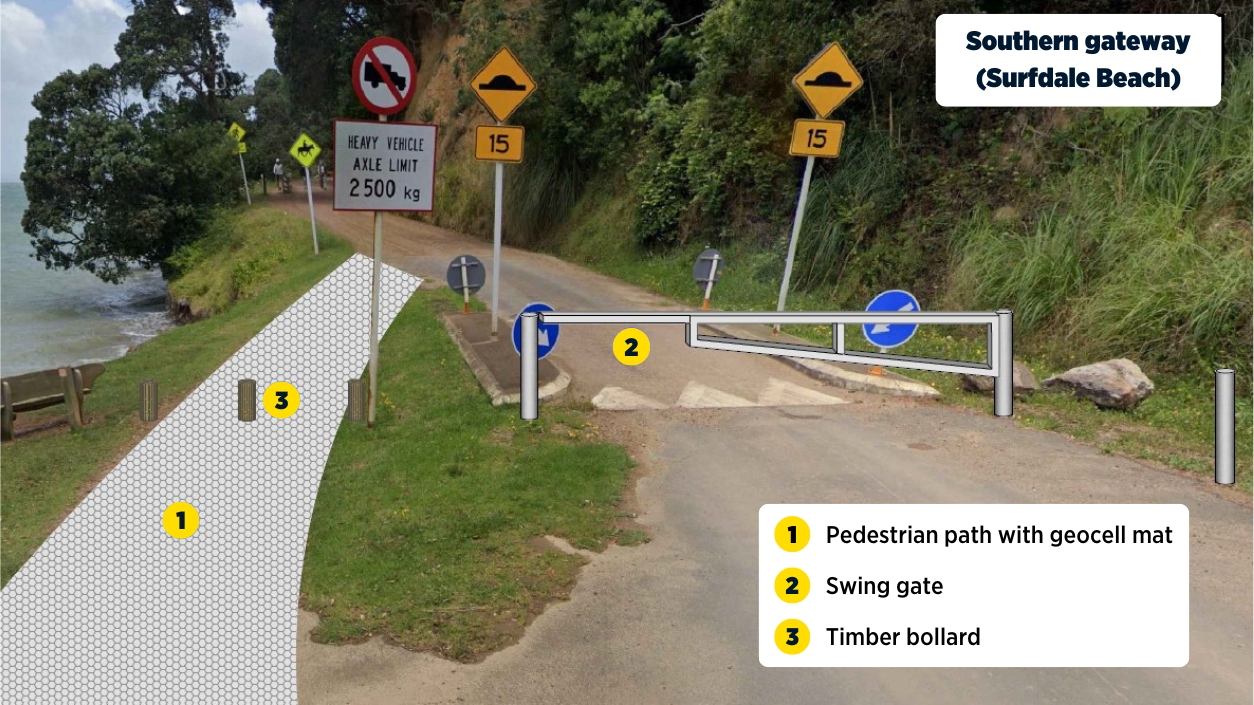
Voices of CRL
“What I love about working in the railway is how it changes a city,” says Annamar Batitang. “That’s one of the things that excites me about this project, really, is to be able to see that.”
How to rebrand a rail network, feat. “head of crayons”
The London Overground is perhaps not quite as internationally famous as the London Underground, but a recent full-on rebrand may change all that. And there’s a lot involved in rebranding a rail network, as this piece by John Elledge explains.
It starts with the names for the lines, although:
First things first: the names were not the most difficult thing. They may have been the most controversial element, and required a long selection process (consultation exercises, engagement with stakeholders, long list, short list and so on). But “whatever names we had been picked would have been quite divisive,” argues Jon Hunter, Transport for London’s head of design – or as he cheerfully describes himself, “head of crayons”. “So long as there’s a story, people will accept them eventually.”
Then there’s the colours for the lines. The signs with the names and the colours for the lines, and the diagrams inside the trains, and the printed maps, and the electronic maps, and the journey-planners…
It’s a great read, and you really have to admire Transport for London’s confidence in change throughout the process. “Londoners work things out very, very quickly, which is reassuring for us,” says Hunter. Maybe a lesson for our local transport authorities there?
Choosing the future of Auckland’s transport infrastructure
This week, Simon Wilson covered the hard choices facing Auckland Council and AT as they prioritise the (gutted) transport investment pool they’ve been allotted for the coming years. The article is paywalled, but here’s a taste:
Street maintenance, including footpaths, along with cycleways, safety and bus services are all losers in a new plan for transport funding that will go before Auckland Council this month.
The plan has been drawn up by a joint working party of council and Auckland Transport (AT) officials. If it’s approved, preparatory work for “time-of-use” or congestion tolling and electrification of the ferries will also be put on hold.
The cuts will happen because the Government has sliced $564 million from the next three years of the Long-Term Plan (LTP) budget for transport in Auckland. The impact will be large and widespread, although if the council officials’ plan is adopted, as seems likely, it will not be as severe as cuts proposed last month by the Government.
This potentially puts the council on a collision course with the Government over how to spend transport funds and over who should decide.
A related (non-paywalled) piece by Sue Cardwell, communications manager for Bike Auckland, notes the blistering irony of the government defunding the most affordable travel options in a cost-of-living crisis:
It’s the projects for people travelling on foot, scooters and bikes that are under the axe most of all.
Adrian Lord, Auckland Transport’s head of cycling, captured the irony when he said, “It’s funny how when money is tight, the cheapest and most universally accessible modes of transport are regarded as ‘nice to have’ and the most expensive, most damaging, most hazardous and least efficient mode is ‘essential’.”
The United Nations recommends 20% of transport spending should be on active modes. Aotearoa New Zealand has never contributed anything like that, and now virtually all funding is completely gone.
[…]
In Auckland, about a third of the population doesn’t, or can’t, drive. To cater only for cars for this population is confounding.
That non-driving third of the population includes kids. If you’re enjoying the relative quiet of the roads during school holidays, imagine how roads would be all the time if our kids were safe to cycle themselves to school — because a lack of safe infrastructure is the primary reason they can’t do so today.
On the flip side, imagine how much more crowded the roads would be if people on bikes were in cars. That’s one in 20 of the journeys into Auckland’s city centre. Almost 2000 more cars every day would be in Quay St, for example.
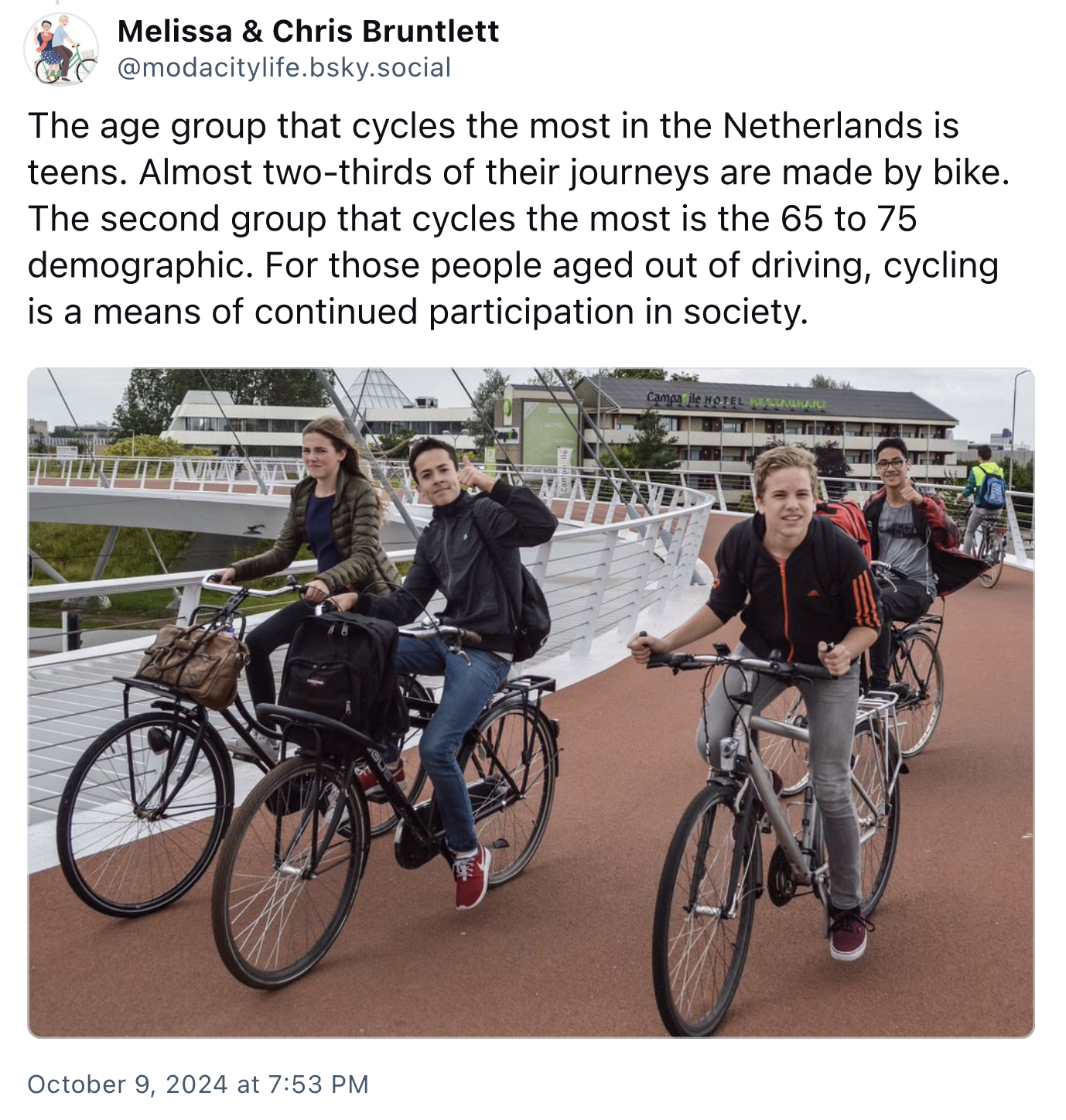
The Greater Auckland Scheme
We like the title of this 1906 map, as seen in the very interesting new book by Tania Mace, The Near West: A History of Grey Lynn, Arch Hill and Westmere (Massey University Press, 2024).
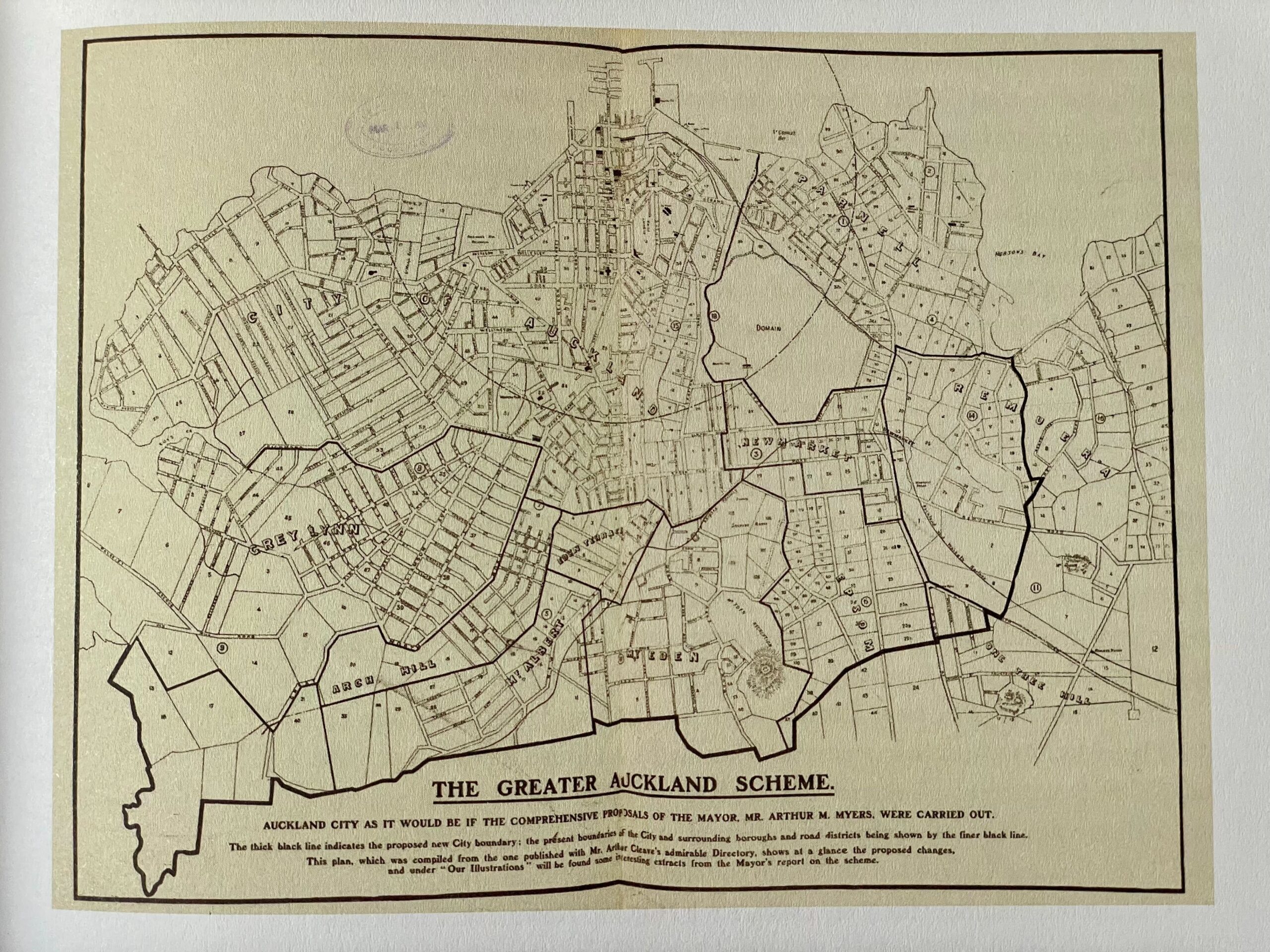
The science of safety
An excellent piece by Max Rashbrooke on this government’s blinkered approach to the evidence, which includes of course the Minister of Transport’s knee-jerk rollback of safe speeds.
Brown’s option is, in short, a colossal waste of money, and will allow 10 times more deaths and serious injuries than the alternative. That’s disastrous in itself. But it’s doubly damning for a Government supposedly in love with data.
In retrospect, the coalition agreements’ loud insistence that decisions “will be based on data and evidence” can be read as prospective virtue-signalling: a gesture emptied of actual meaning. Parts of the Government seem, if anything, to be at war with science.
Brown recently eliminated the position of chief science adviser to his ministry. And no wonder: the last incumbent, professor Simon Kingham, argues that “no science adviser would tell them [ministers] that the policy they’re pursuing at the moment is sensible”.
Meanwhile, on the local level: good to see Councillor Richard Hills (and others) continuing to press the point about what the speed reversals will mean in tangible human terms, and whether local councils have a duty to push for better outcomes.
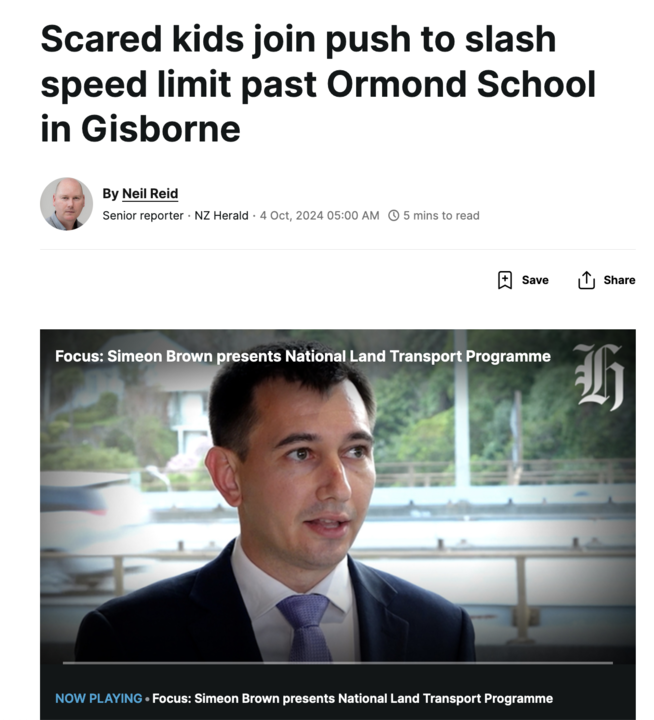
Joel MacManus tweet(s) of the week
What is it about Wellington, and specifically the Spinoff’s Wellington editor, that delivers such fresh burns? We don’t know, but we like it.
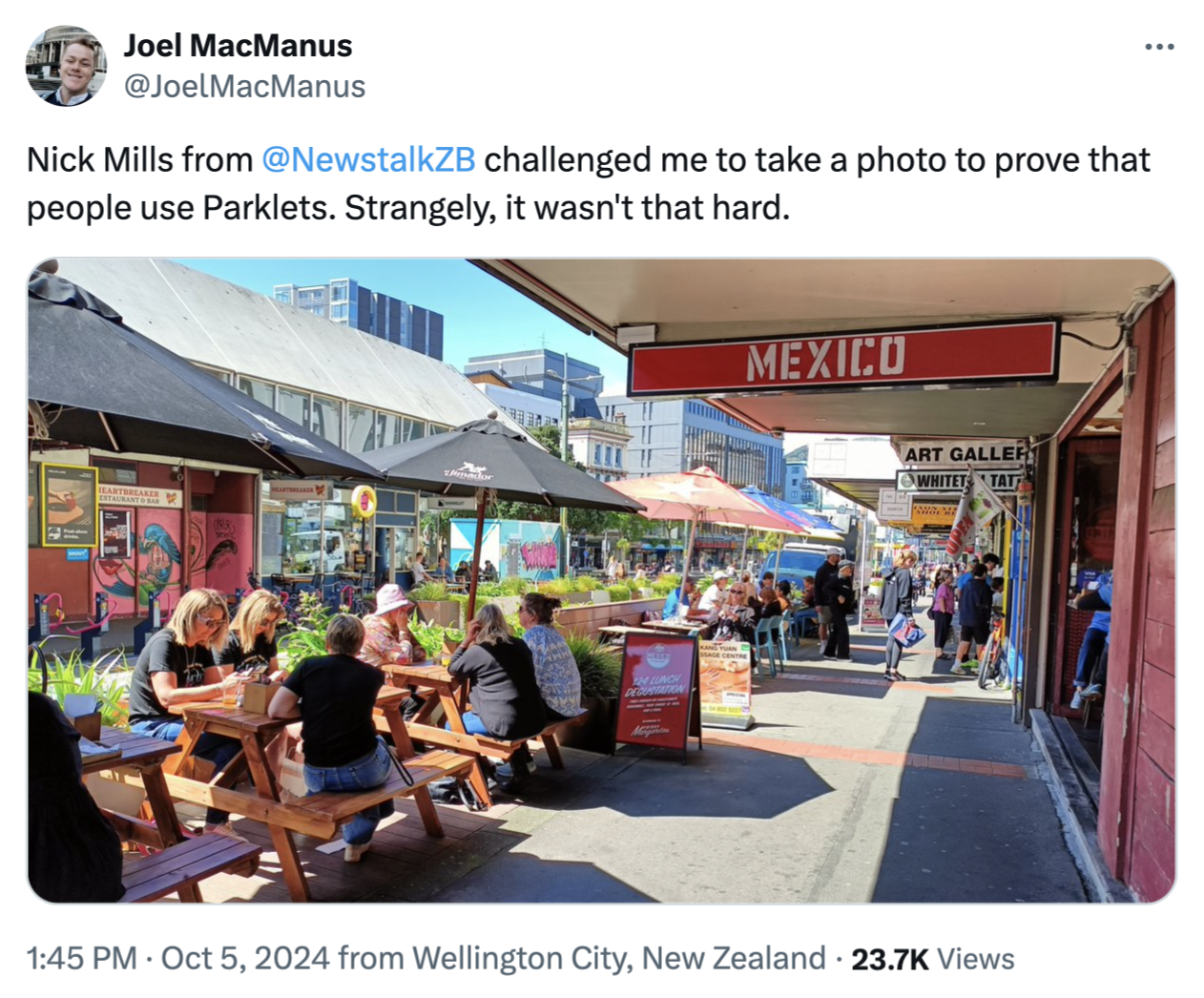

Hayden Donnell rankings and rants of the week
In case you missed it, Hayden Donnell at the Spinoff ranked all the Auckland Harbour crossing schemes, from worst to best. The results will probably astound you.
And luckily it’s Nobel Prize season, so they can give one to Hayden for the results of his exhaustive (see what we did there) multi-year investigation into what exactly it is that’s gumming up our cities. You’ll want to hold onto your hats: turns out, TRAFFIC IS MADE OF CARS!!
The man himself says this research has (ahem) driven him to the brink of madness:
Please help. I don’t know how to explain this. I have written so many articles. “The city is committed to a motorway system and all projections indicate that an increasing number of people will want to drive to the Central Area,” said the 1955 Master Transport Plan. We’ve been building motorways ever since. Seventy years. More congestion than ever before. Not working.
PS Remember to use your power for good!
Voting papers are arriving in the letterboxes of power-account holders in the isthmus, for the Entrust election. This is your chance to move this powerful community asset into the 21st Century, under the leadership of More for You, Better for Auckland. As Patrick wrote, this team offers a far more sustainable, resilient and visionary plan for empowering the community than those who’ve had a grip on the trust for 30 years. Be sure to vote – the power is yours!


 Processing...
Processing...
Thanks for all the hard work writing these posts!
Another budget slashed is the cycling education budget. Cycling coach Janet Stark posted on facebook :
> “Cycle Education in Auckland will change for the worst.
Major cut backs on all programs. Most programs are being stopped or decreased significantly from the start of 2025.”
The courses run in schools have been brilliant. Many kids who don’t even have bikes at home have learned to ride at school. At my childs’ primary school there has been a definite increase in the number of kids riding over the past couple of years. That progress may disappear.
Yes a terrible outcome for safety. So many of those who oppose safety measures such as lower speeds, raised crossings and separated cycle infrastructure say that if people were just better educated on safety we would not need those “expensive ” things. A lose- lose for safety from this decision.
On the London Overground rebrand, here’s a video with TfL’s chief designer on the changes:
https://m.youtube.com/watch?v=8e9W4–zS70
I’ve been living in and around London longer then the idea of the London Overground has existed. It should not be hard to change something that is only 16 years old approximately.
It is not the same as changing Aotea square into a Waikato town name for instance or Britomart into a massive body of water that surrounds a lot of Auckland. That would be like TfL using Middlesex as a station name!
Started the day by giving 5 ticks to the “Better” slate on the Entrust election, then a beautiful 28km ride to work from the east, along the waterfront, about 60% of it separated from cars.
Things aren’t perfect, but sometimes it’s good to celebrate the progress.
The London Overground line rebranding scheme was well-intentioned but such a disappointment. Instead of utilising names that were emerging from the community, a central committee of pencil-necked desk jockeys imposed their own.
While it’s all very well to ‘celebrate diversity’ by attempting to draw attention to (apparently) important but overlooked figures, I can’t help but wonder if they just inspired resistance to the whole exercise instead.
For every person against it, there will be a person for it. Personally, some are good, some are questionable. But it will be forgotten about next year.
In NZ its just so stereotypically pragmatic (mostly):
Trains: Southern, Eastern, Western……and Onehunga lines
Busways: Northern, North West, Eastern……and Botany to Airport.
I don’t know anywhere else that names lines, predominantly, based on the compass.
Probably because it only works when you have just a few names. I think it is relatively common to have, for example, even numbers go in East-West direction and odd numbers going North-South.
Singapore has the East-West, North-South & North-East MRT lines
True, but the majority of lines (5?) aren’t named like that.
Voted for Patrick & the team, ballot arrived pretty quick.
Love that teens cycle so much in the Netherlands.
nz teens are transported, until the get their car license, then they are broke.
This demographic are the biggest loser in the latest GPS
Can someone clarify what “Public Control” means for Entrust under Patrick & the team’s goals. I understand Entrust is a private trust for the benefit of electricity consumers within a certain area. Why would you want to have this under public control ? Sorry do not understand and hoping for clarification.
The other side are stating “ Won’t sell Vector”
Seems like an important point if you don’t understand.
People in business should know better than to rely on a Council to continue to provide parking. Just don’t sign a lease that doesn’t give you control over customer parking. Not even if the buildings a lovely heritage ones that have been beautifully refurbished. Look for somewhere further out with a privately owned carpark. The only time people working at a Council even consider their effects on businesses is when they claim there wont be any (like in in Albert St).
It’s nice to agree with you for a change. If you want parking, you pay for it and you destroy the amenity of your site. Don’t expect the public to pay for it and don’t expect them to let it ruin their shared environments.
SB, I don’t think what you have said is exactly what Miffy was intending, but I much prefer your version. And it can work. I well remember being in Mestre, near Venice. Not a single car park on the main street, but tram lines. As I sat outside and lingered over my kebab I noticed people arriving and departing from businesses by tram. Hard for most Aucklanders to comprehend, and even harder to embrace, but it seemed to worked there.
As a cultured city, we are decades behind most of the others in this world. That is a fact, but it should not stop us from benefiting from the established scientific method that has proven cities are the best places to live.
With less houses, more apartments, we will be able to build up, like a true city. In this country we are so underpopulated that we live in this delirium of endless space, forgetting that we are a tiny few islands, and one of the most desirable place to be when the end times eventuate.
We have been behind since the 1970s, and unfortunately we have a government with all the sensitivities of Robert Muldoon, at his inebriated best. Our current prime minister is technically slightly more physically repulsive than even Muldoon, and perhaps this is why he is so offended by intelligent opinions, particularly from educated women (his seventh day adventurism may also play a part in his misogyny).
As for simple Simeon, he is from the same part of Auckland as the prime minister, and it does have a reputation, I certainly would hate to be called an Eastie. The principal factor being the crap public transport, so perhaps the minister has never had a good public transport experience, hence his devotion to the motor-normatives.
Certain generations can be understood for their difficulties in accepting that so much of what they have grown up with is damaging, to people, and planet, but it seems odd that someone who is not yet thirty has such a disconnect with the real world. I wonder if he sleeps well at night, or is he one of the “genius” four hour sleepers?
Let’s just say that he and the prime minister and Minister Brown are two JAFAs that really give the rest of us a bad name.
bah humbug
I am heartened by what is happening in the city. I visit now only about once a month, but the change is impressive. Not only is there much more greenery on Queen St, but change seems to be permeating outwards, such as the redevelopment of Victoria St. The city is more open and inviting for pedestrians.
I am hopeful that this change will continue, and that it will accelerate, despite the single mindedness of the Minister of Cars, who not only is going to do it his way, but not even take time to listen to contrary views.
Unfortunately we are badly served by Ministers who are unsuited to the roles they occupy. Why would a gun lobbyist have the role she does; or someone who believes smoking is not to be further discouraged have a health role? The less said about the Minister of one liners, killing dolphins, and general environmental destruction the better.
The Transport minister might want read about this for his 4KM Wellington tunnel project!
https://www.jstage.jst.go.jp/article/rtriqr/48/3/48_3_136/_pdf/-char/en
In Niigata prefecture, it’s well known to getting
Earthquakes. Also it’s got a lot of road tunnels and rail tunnels due to its geographical surroundings. They’re been studies been undertaken in Japan by Tunnel Engineering Laboratory, Structures Technology Division in East Japan Railway Company of the extent of what damage has been caused by earthquakes to road & rail tunnels in Niigata prefecture.
Since mountain tunnels are generally surrounded by stable ground, their displacement during seismic activity tends to be minimised, making such structures less susceptible to seismic activity, Despite this, many railway mountain tunnels have sustained damage from the 1923 Kanto Earthquake to 2003 Niigataken-Chetsu Earthquakes and all of these tunnels were close to 10-15 km away from epicentre.
Key reasons why many of mountain tunnels suffered serious damage due to fracture zone in mountain, tunnel located in a fault line, mountain is too shallow, tunnel on soft ground while not on hard ground, poor geographical condition like addition load on tunnel stress & pressure on wall leading to fractures.
In October 23rd 2004, Niigatakan-Chuetsu 6.8 Earthquake latitude 37,17 N. and 138 52 E. at depth of 13 km in Japan’s Niigata Prefecture occurred causing mass destruction and damage to tunnelled roads and rail. 22 railway tunnels were seriously damaged, 6/22 tunnels were heavily damaged and required repair & reinforcement, 9/22 tunnels was damaged requiring repair & reinforcement, 7/22 was damaged but not required repair & reinforcement.
Its is good that were following countries like Taiwan & Japan for example and not following Europe. Definitely in step in-right direction. But we really need to think about safety so no-one gets injured or hurt by infrastructure we built cause we didn’t think about the geographic’s. Wellington does need another tunnel but needs to consider factors stated.
It would ideal and sensible for transport minister to go for second Mt Victoria tunnel over Wellington’s second tunnel. If we did 4km long tunnel under Wellington suburbs, it’ll be a dangerous idea when earthquake was to hit, it’ll cost innocent lives cause of suburbs being low lying flat ground meaning the ground is soft and not on hard ground sediment. Whereas for Mt Victoria is a mountain with hard rock sediment meaning ground sediment doesn’t feel effects of earthquakes as much as soft ground.
I have suggested this before only to get jumped on by Kiwirails chief apologist but I will put it up again in a different form because I think it should be considered. Kiwirail should get out of providing Interisland car and truck ferries in favour of purchasing a small container ship running between Picton and Wellington. If anyone is interested in debating how this would work please leave a comment and I will reply.
how would i get my car/truck across the cook strait, in the same way that i currently would?
Bluebridge
Doesn’t address interisland rail freight though.
Crossing the cook strait is a vital transport link, and since transport is a public good I argue there must be at least one nationalised ferry option. and though I would be receptive of your case from detaching ocean-going transport from KiwiRail leaving the latter to focus on its land-based operations, i firmly believe that complete privatization would, as it was with TranzRail, be a disaster.
So Kiwirail would have three options to get its containers across the straight. Bluebridge or a Govt ro ro ferry or its own container ship. So time sensitive freight on the ferries other containers on the ship. I was thinking a 100 container vessel doing one return sailing a day. Because they would have the option of using the ferries they would only require one ship. They could pick a quiet time of the year for there annual survey. They would have the advantage of being able to split their freight onto two competing ferry operators. They already own trailers which are used to road bridge their containers onto the non rail served ferries so no additional expense there. Because the container ship is small it will be relatively cheap to operate with a small crew.
I am not saying that this solution would be better than two or three rail enabled ships but Willus is determined to cut the operation anyway. And consider this why should Kiwirail provide its road trucking competition a service across the straight.
Do you have any locations in mind for the yards where freight would be transferred from train to truck to ferry and back?
Space for that seems to be a problem with current options, especially for the Wellington end.
Okay if another entity were to take over the Interisland ferries transfers wold just carryon the same as happens now when the Aratere is out of service. Presumably containers for Bluebridge would just travel on road from the existing rail yards to the Bluebridge marshalling area. Containers for the small container Shi would just be shunted to the wharf. The same at Picton although the general wharf is in The next bay so it would require a longer trip. So no additional inferstructure would be required. The Govt could just purchase the Interisland ships off Kiwirail. And life could go on as normal until the Aratere is retired at which point the new ship could be purchased presumably out of the funds from the sale.
MOTAT is trying to Raise Funds to replace their worn out Tracks by Adopt-A-Tram fund raising appeal .
https://www.motat.nz/Adopt-A-Tram/